Found a total of 10000 related content

Using Form Requests for Validation in Laravel.
Article Introduction:Use FormRequests to extract complex form verification logic from the controller, improving code maintainability and reusability. 1. Creation method: Generate the request class through the Artisan command make:request; 2. Definition rules: Set field verification logic in the rules() method; 3. Controller use: directly receive requests with this class as a parameter, and Laravel automatically verify; 4. Authorization judgment: Control user permissions through the authorize() method; 5. Dynamic adjustment rules: dynamically return different verification rules according to the request content.
2025-07-30
comment 0
500
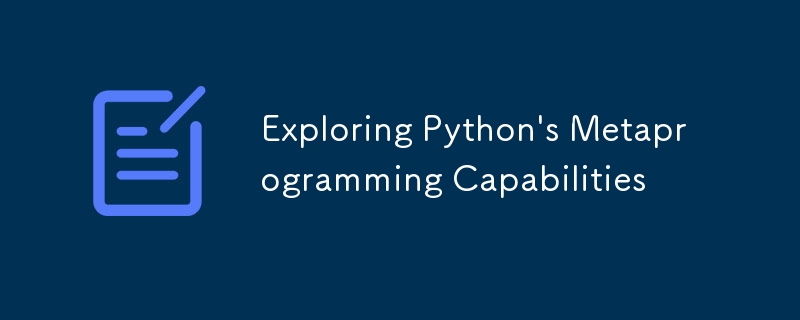
Exploring Python's Metaprogramming Capabilities
Article Introduction:The core methods of Python metaprogramming include: 1. Use type to dynamically create classes; 2. Control the class creation process through metaclasses; 3. Use decorators to modify functions or class behavior; 4. Dynamically modify object functions at runtime. These mechanisms allow developers to dynamically generate or modify code structures at runtime. For example, type can construct classes based on parameters, metaclasses can be used for interface consistency verification or automatically register subclasses, decorators are widely used in property encapsulation or framework routing management, while monkey patches support temporary enhancement class functionality, suitable for testing mocks or emergency fixes, but abuse should be avoided to maintain code maintainability.
2025-07-18
comment 0
424
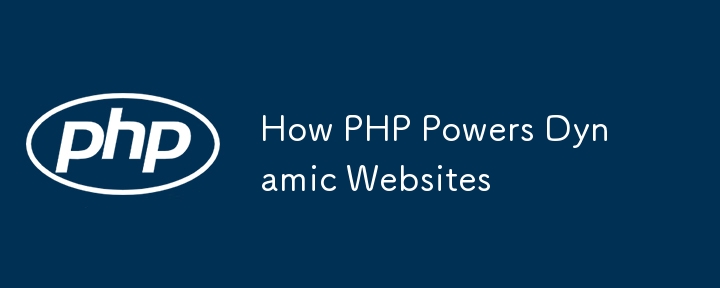
How PHP Powers Dynamic Websites
Article Introduction:PHP dynamically generates HTML content by running scripts on the server side, making the website interactive and real-time. 1. It obtains data from the database according to user requests and dynamically splices web page content, realizing that a set of code supports a large number of pages; 2. PHP often cooperates with MySQL to handle functions such as login verification, comment system, etc. that require data storage and query; 3. Use template engines (such as Smarty or Blade) or view separation technology to separate logic from presentation, improving code maintainability; 4. Combine cache mechanisms such as OPcache and Memcached to optimize performance, reduce duplicate parsing and database pressure, thereby efficiently supporting dynamic website operation.
2025-07-18
comment 0
521

Advanced data validation techniques in Laravel
Article Introduction:Laravel provides a variety of advanced data verification technologies, including encapsulating complex logic using custom rule objects, reusing verification rules using form requests, implementing conditional verification through sometimes methods, and uniqueness checking in combination with database rules. First, create a custom rule class through make:rule and define logic in passes() and message() methods, so complex verification such as age limit can be achieved; second, create a form request class using make:request to separate the verification logic and directly inject it into the controller to improve the code organization structure; third, call the sometimes() method to dynamically decide whether to verify a certain field based on the input value, which is suitable for dynamic forms
2025-07-02
comment 0
193

A Practical Guide to Java 17 Features
Article Introduction:Java17 is a long-term supported version that brings safer, concise and efficient code improvements. 1. Use sealed class to control the inheritance of the class, explicitly allowable subclasses through permits, and require the subclass to be marked as final, sealed or non-sealed; 2. Switch pattern matching becomes the standard, supporting directly declaring variables and type matching in the case, and combining sealed class to achieve exhaustive inspection; 3. Record class provides concise immutable data carrier syntax, automatically generates constructors, getters, equals, hashCode and toString, supporting custom methods and compact constructor verification; 4.instanceof
2025-08-06
comment 0
505
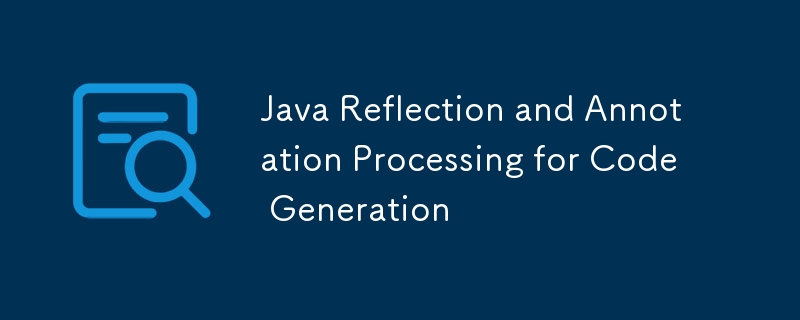
Java Reflection and Annotation Processing for Code Generation
Article Introduction:The core of using Java reflection and annotation to generate code is to clarify its applicable scenarios and steps: 1. Reflection is used to dynamically obtain the class structure at runtime, suitable for generating logical code based on class information at runtime. Common operations include Class.forName, getDeclaredFields and getAnnotation; 2. Annotation processing generates code at compile time, and generates Java files by implementing AbstractProcessor and process methods, which is more suitable for performance-sensitive and IDE-supported scenarios; 3. Choice is determined based on requirements: reflection for dynamic loading at runtime, and efficient code generation at compile time with annotation; 4. Common problems include not triggering the processor and not compiling the generated code. Generate the code without compilation; 3. Selection is determined based on requirements: reflection for dynamic loading at runtime, and efficient code generation at compile time; 4. Common problems include not triggering the processor and not compiling the generated code.
2025-07-17
comment 0
485

Introduction to Java Records for Immutable Data
Article Introduction:JavaRecords is a feature introduced by Java16 to simplify the definition of immutable data model. It is a special class that automatically generates constructors, getter methods, equals(), hashCode() and toString() methods for fields to reduce redundant code; it is suitable for use in scenarios such as data transfer objects (DTO), JSON serialization model classes, function return packaging, etc.; it is not suitable for situations where complex logic, inheritance interfaces, field default values or verification logic are required; verification logic can be added through a compact constructor, such as checking non-negative age; Record naturally supports immutability, improves development efficiency and code readability, and has significant advantages in suitable scenarios.
2025-07-14
comment 0
918

Security Concerns When Using Java Reflection
Article Introduction:The Java reflection mechanism has three major security risks: 1. Break through access control restrictions, read or modify private fields, it is recommended to avoid using reflection on sensitive classes and enable security managers; 2. Abuse of reflection to create instances or execute dangerous methods, which may lead to malicious code execution, whitelist verification and use a sandbox environment; 3. The class loading process may introduce malicious classes, and it is necessary to control the source of the class loader and verify the integrity of the dynamically loaded classes. Reasonable restrictions and reviews can reduce security risks.
2025-07-06
comment 0
782
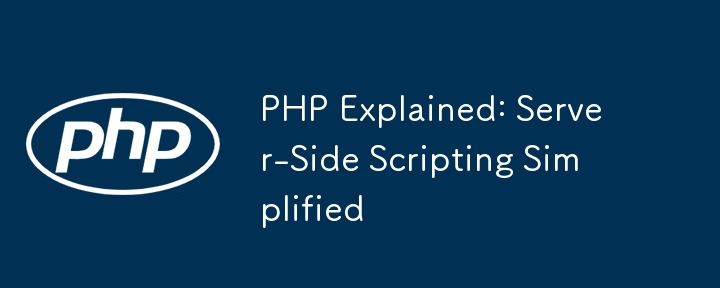
PHP Explained: Server-Side Scripting Simplified
Article Introduction:PHP is a server-side scripting language designed for web development. It runs on the server and after processing the code, it sends HTML and other content to the browser. Unlike client scripts (such as JavaScript), users cannot see the actual PHP code, only the output it generates. For example, PHP can connect to a database and display product lists dynamically. Reasons for PHP's popularity include: 1. Easy to learn; 2. Designed specifically for web development; 3. Widely supported; 4. Having a large ecosystem; 5. Open source and flexible. PHP can be directly embedded in HTML files and run through local server environments (such as XAMPP). In short, PHP is a powerful tool for efficiently generating dynamic content.
2025-07-16
comment 0
313

Python `@property` decorator
Article Introduction:@property is a decorator in Python used to masquerade methods as properties, allowing logical judgments or dynamic calculation of values ??when accessing properties. 1. It defines the getter method through the @property decorator, so that the outside calls the method like accessing attributes; 2. It can control the assignment behavior with .setter, such as the validity of the check value, if the .setter is not defined, it is read-only attribute; 3. It is suitable for scenes such as property assignment verification, dynamic generation of attribute values, and hiding internal implementation details; 4. When using it, please note that the attribute name is different from the private variable name to avoid dead loops, and is suitable for lightweight operations; 5. In the example, the Circle class restricts radius non-negative, and the Person class dynamically generates full_name attribute
2025-07-04
comment 0
1022

Applying SOLID principles in Laravel development.
Article Introduction:The SOLID principle can improve code readability, flexibility and maintainability in Laravel development. The specific application is as follows: 1. The single responsibility principle (SRP) requires each class to only assume one responsibility to avoid mixing logic such as verification, database operation and email sending in the controller. The separation of responsibilities should be used using FormRequests, ServiceClasses and Jobs/Events; 2. The opening and closing principle (OCP) emphasizes the implementation of functional extension through interface and dependency injection without modifying the original code, such as dynamically replacing notification methods with NotificationSender interface; 3. The Richter replacement principle (LSP) ensures that subclasses can replace the parent class without destroying the program behavior, and avoid rewriting the method.
2025-07-20
comment 0
862

How to customize the welcome page in VSCode?
Article Introduction:Personalized customization of VSCode welcome pages can be achieved by installing extensions and custom configurations. 1. Install extensions such as "CustomWelcomePage", edit the index.html and style files it generates, and insert HTML, CSS or JS to change the content of the welcome page; 2. Use the "CustomizeUI" class plug-in to inject custom CSS/JS, and achieve deeper appearance control by hiding original elements or dynamically generating new content; 3. Modify startup parameters such as code--new-window or specified path, and combine with the local server to open the custom page by default. Although VSCode itself does not support it directly
2025-07-28
comment 0
616

From Script to Website: How PHP Works
Article Introduction:When entering the URL and press Enter, the browser requests the PHP page through the server (such as Apache or Nginx); the server handes the .php file to the PHP engine for processing; PHP executes code to generate HTML content and returns it to the server, and finally sends it to the browser to display. The entire process includes: 1. The server recognizes the .php file and passes it to the PHP processor; 2. PHP executes the script and dynamically generates HTML output; 3. The output result is sent back to the browser and the user sees the final page. PHP runs on the server side, ensuring the seamless presentation of security and dynamic content.
2025-07-17
comment 0
176
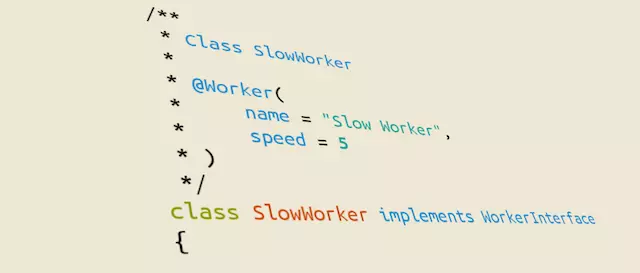
Your Own Custom Annotations - More than Just Comments!
Article Introduction:PHP Custom Annotations: Enhanced Code Flexibility and Scalability
This article discusses how to create and use custom annotations in Symfony 3 applications. Annotations are the document block metadata/configuration we see above classes, methods and properties. They are often used to declare controller routing (@Route()), Doctrine ORM mapping (@ORM()), or control Rauth and other packages. Types and methods of access. This article will explain how to customize annotations and read class or method information without loading the class.
Key points:
PHP custom annotations can be used to add metadata to your code, affecting your code behavior, making it more flexible and easier to adapt. They can be used to define routing information, specify verification rules, or configure dependency injection.
2025-02-15
comment 0
1052
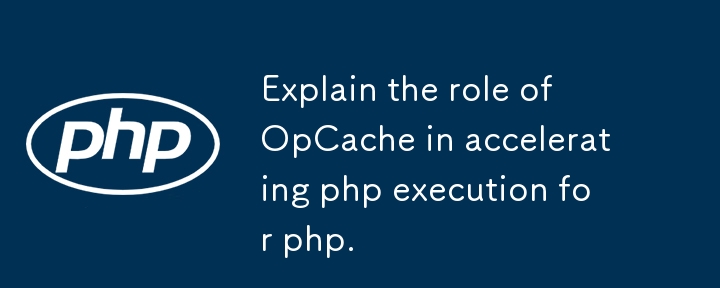
Explain the role of OpCache in accelerating php execution for php.
Article Introduction:OpCache significantly improves execution efficiency by cached compiled PHP scripts, and its core is to avoid duplicate parsing and compilation. 1. After OpCache is enabled, the opcode is stored in shared memory, and subsequent requests can be executed directly; 2. Reduce CPU usage and disk I/O; 3. Key configurations include the on state, memory size, maximum cache files and verification frequency; 4. Applicable to scenarios where code changes are small and access is large, but the effect is limited when dynamically generating code; 5. The status can be checked through phpinfo and enabled manually. Rationally configuring OpCache is an important means to optimize PHP performance.
2025-07-08
comment 0
717
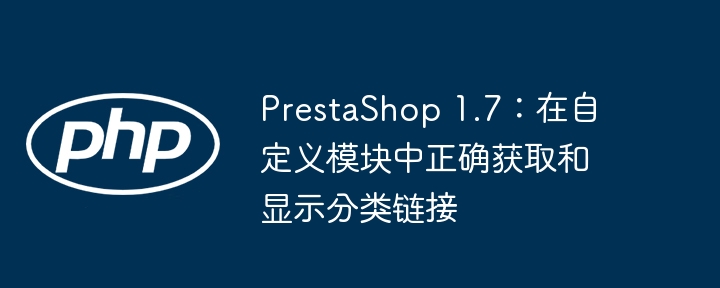
PrestaShop 1.7: Correctly get and display categorical links in custom modules
Article Introduction:This tutorial details how to correctly obtain and display the classification link in the PrestaShop 1.7 custom module, and resolves the common error of "Undefined index: link" after using the Category::getNestedCategories method. The article will guide you how to use PrestaShop's Link class to assign link objects to Smarty templates in PHP code, and dynamically generate classified URLs through the getCategoryLink method in the template to ensure the accuracy and maintainability of the link.
2025-08-21
comment 0
641
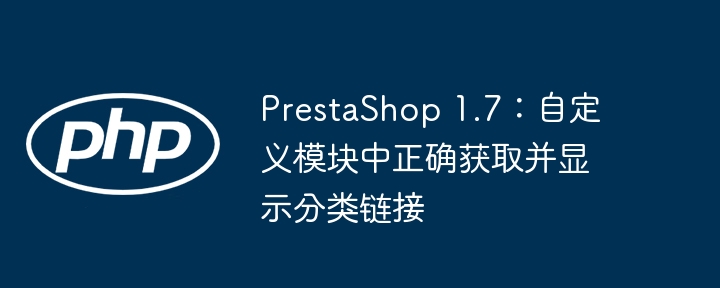
PrestaShop 1.7: Correctly get and display classification links in custom modules
Article Introduction:This tutorial aims to resolve the "Undefined index: link" error encountered when trying to get and display the classification link in the PrestaShop 1.7 custom module. We will explain in detail how to use PrestaShop's Link class to pass link objects to the Smarty template in the backend PHP code, and call the getCategoryLink method correctly in the frontend template to dynamically generate a classification URL to ensure the correctness and accessibility of the link.
2025-08-20
comment 0
318

What is Java Reflection API and its use cases?
Article Introduction:The JavaReflection API allows you to check and operate components such as classes, methods, fields at runtime, so that the code has dynamic adaptability. It can be used to discover class structures, access private fields, call methods dynamically, and create instances of unknown classes. It is commonly found in frameworks such as Spring and Hibernate, and is also used in scenarios such as serialization libraries, testing tools, and plug-in systems. 1. The dependency injection framework realizes automatic assembly through reflection; 2. The serialization library uses reflection to read object fields to generate JSON; 3. The test tool uses reflection to call the test method and generates a proxy; 4. The plug-in system dynamically loads and executes external classes with the help of reflection. However, it is necessary to pay attention to performance overhead, security restrictions, packaging damage and lack of security during compilation period, and should be used with caution to avoid
2025-07-14
comment 0
813
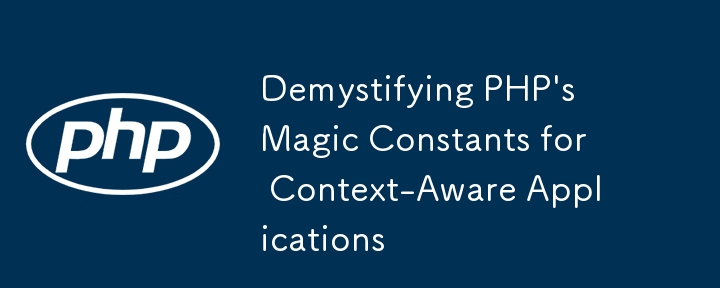
Demystifying PHP's Magic Constants for Context-Aware Applications
Article Introduction:The seven magic constants of PHP are __LINE__, __FILE__, __DIR__, __FUNCTION__, __CLASS__, __TRAIT__, __METHOD__, and they can dynamically return code location and context information, 1. LINE returns the current line number, for precise debugging; 2. FILE returns the absolute path of the current file, often used to reliably introduce files or define root directory; 3. DIR returns the directory where the current file is located, which is clearer and more efficient than dirname (__FILE__); 4. FUNCTION returns the current function name, suitable for function-level log tracking; 5. CLASS returns the current class name (including namespace), in logs and factories
2025-07-30
comment 0
962

How do I use query builder in Yii?
Article Introduction:Yii's query builder is a powerful tool that allows developers to build secure and readable database queries through PHP methods. 1. It generates SELECT, INSERT, UPDATE and DELETE statements through object-oriented method to reduce the risk of SQL injection. 2. Query construction adopts chain calling methods, such as select(), from(), where() and other methods to dynamically construct query conditions. 3. Supports complex query logic, including dynamic condition filtering, OR logical grouping and nested queries. 4. It not only supports data retrieval, but also supports data writing operations, such as insert(), update() and delete(). 5. It is recommended to use alias to improve the readability of the code
2025-07-06
comment 0
950



















